SIGGRAPH 1989: Art Show
Chair(s):
- Mark Resch
-
- Rensselaer Polytechnic Institute
Art Show Overview:
I welcome you to the SIGGRAPH ’89 Art Show on behalf of the SIGGRAPH ’89 conference committee.
This year’s show is the result of strong international response to SIGGRAPH’s call for computer art. Jurors from Austria, Canada and the United States selected 80 pieces from a much larger group of entries. The works represent a broad range of styles and techniques and include two-dimensional works, sculptures, books, interactive installations and videotapes.
The computer art community is a vital community, with varied interests, opinions and visions. I am pleased and excited to share works by members of this community. I thank all who have participated by volunteering labor, essays or artworks. Their contributions make the show.
Once again, welcome to the SIGGRAPH ’89 Art Show.
Mark Resch
SIGGRAPH ’89 Art Show Chair
Jury:
- Copper Frances Giloth
-
- Real Time Design
- University of Massachusetts/Amherst
- Patric D. Prince
-
- California State University
- Independent Curator
- Christine Schöpf
-
- Ars Electronica
- Österreichischer Rundfunk (ORF)
- Dorothy Spencer
- Lorne Falk
-
- ARCHEON
Visual Proceedings:
View PDF: [SIGGRAPH 1989: Art Show] - 29.9MB
Additional Information:
Art evolves with and is influenced by the development of many technologies and many diverse media. While histories of specific media exist, we rarely consider art history in terms of the history of the technologies employed by artists. Rather, we consider the art tradition part of the cultural and historical moment. Until recently there has been a tendency to conceptualize the historical framework of computer art in terms of technology. This is understandable, since the history of computers must be a history of the evolution of technology, and a common view holds that computer artists find more acceptance from the computer community than from the art community. Recent discussion about the relationship between computer art and the mainstream artworld prompted the SIGGRAPH ’89 art show committee to call for, and here to present, essays about the context of computers and art as well as reproductions of the artworks selected for the exhibition.
Artists have always participated in the activities of the Association for Computing Machinery’s Special Interest Group on Computer Graphics (ACM/SIGGRAPH). SIGGRAPH has developed into a prominent forum for exchange of ideas about computer graphics. The SIGGRAPH annual meeting functions as an academic conference presenting technical papers and panel discussions, a place to continue education by offering tutorials in various aspects of computer graphics, a meeting place for special interest sub-groups, a large equipment and hardware exhibition, and a provider of various venues for presentation of artworks made using computer graphic techniques, including a juried art exhibition as well as animation and film screening.
SIGGRAPH has championed the cause of arts and artists using computers. But do not misunderstand the interest of ‘technological’ organizations like SIGGRAPH in artmaking. The support for artists is not just support for ‘art for art’s sake’. The changes in perception and communication that result from artists using computers are profound. The fastest system for information gathering and understanding is the human visual system. The path from the eyes to the brain is among the shortest and the most massively parallel in all of the nervous system. Throughout history, artists have been actively involved in accessing this powerful visual system for intellectual and aesthetic communication. Artists contin1,1ally strive to develop techniques for manipulating large amounts of information in order to create works that allow the viewer an aesthetic experience. Communicating at the speed of the human visual system with tools like computers to sort through vast amounts of information will allow us to end the ‘Information Age’.
“Computer Art in Context: The SIGGRAPH ’89 Art Show Catalog” considers many of the questions of the context of computer art. It is clear that computer art will profoundly affect our art-historical and cultural contexts, as artists initiate the change from art-for-display to network participation. Artmaking is a serious activity, and vision is still the essential ingredient. New, fast machines or sophisticated algorithms, while impressive, do not substitute for vision in works of art. We must participate from within our context, not apart from it.
Mark Resch
SIGGRAPH ’89 Art Show Chair
Exhibition Artworks:
-

Type: [2D & Wall-Hung]
African Heart
Artist(s): [Jascha]
[SIGGRAPH 1989]
-
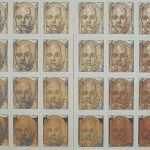
Type: [2D & Wall-Hung]
All Sisters, Small Change
Artist(s): [Freeman]
[SIGGRAPH 1989]
-
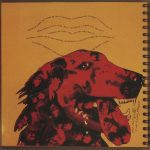
Type: [Artist Book]
And You Thought the Eighties Were Bad
Artist(s): [Pinto, Spicer, and Bastian]
[SIGGRAPH 1989]
-

Type: [2D & Wall-Hung]
Back to the Future
Artist(s): [Martin]
[SIGGRAPH 1989]
-
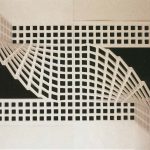
Type: [2D & Wall-Hung]
Bending and Twisting : Hypothesis #3
Artist(s): [Bertol]
[SIGGRAPH 1989]
-

Type: [2D & Wall-Hung]
Betty Furness Metamorphosis
Artist(s): [Muskovitz]
[SIGGRAPH 1989]
-
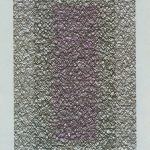
Type: [2D & Wall-Hung]
Biblio.Face
Artist(s): [Finley]
[SIGGRAPH 1989]
-
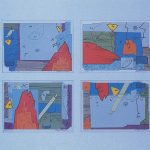
Type: [2D & Wall-Hung]
Box 71 Series (#6, #7, #8, #9)
Artist(s): [Holland]
[SIGGRAPH 1989]
-

Type: [2D & Wall-Hung]
Bringing Samuel Home
Artist(s): [Hillier]
[SIGGRAPH 1989]
-

Type: [2D & Wall-Hung]
Bumper Crop
Artist(s): [Johnson]
[SIGGRAPH 1989]
-

Type: [3D & Sculpture]
Caprice
Artist(s): [Burnham]
[SIGGRAPH 1989]
-
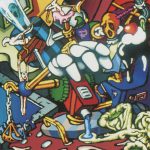
Type: [2D & Wall-Hung]
Chaos
Artist(s): [Sabiston]
[SIGGRAPH 1989]
-
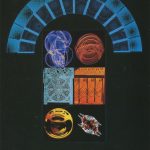
Type: [3D & Sculpture]
Chaos/Information as Ornament/A Tribute to Louis Sullivan
Artist(s): [Sandor]
[SIGGRAPH 1989]
-
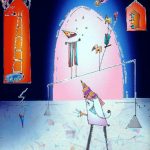
Type: [2D & Wall-Hung]
Circus
Artist(s): [Joffe]
[SIGGRAPH 1989]
-
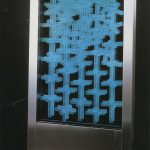
Type: [3D & Sculpture]
Computer Jungle
Artist(s): [Yusa]
[SIGGRAPH 1989]
-
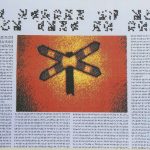
Type: [2D & Wall-Hung]
Crossing Sign Text Piece
Artist(s): [Smith]
[SIGGRAPH 1989]
-
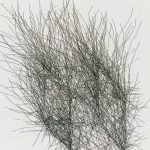
Type: [2D & Wall-Hung]
Cube 4
Artist(s): [Dehlinger]
[SIGGRAPH 1989]
-
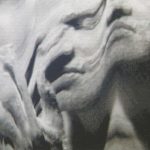
Type: [2D & Wall-Hung]
Curtain
Artist(s): [Sturgeon]
[SIGGRAPH 1989]
-

Type: [2D & Wall-Hung]
Dawn's Diagonals
Artist(s): [Bangert and Bangert]
[SIGGRAPH 1989]
-
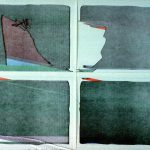
Type: [2D & Wall-Hung]
Dawn's Leaf
Artist(s): [Bangert and Bangert]
[SIGGRAPH 1989]
-
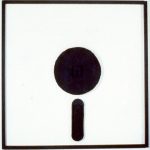
Type: [2D & Wall-Hung]
Disk
Artist(s): [Cox]
[SIGGRAPH 1989]
-

Type: [InstallationInteractive & Monitor-Based]
Electric Anthill
Artist(s): [Travers]
[SIGGRAPH 1989]
-
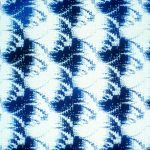
Type: [InstallationInteractive & Monitor-Based]
Emerging Forms
Artist(s): [Kapan]
[SIGGRAPH 1989]
-

Type: [2D & Wall-Hung]
Essence of Form
Artist(s): [Simmons]
[SIGGRAPH 1989]
-

Type: [2D & Wall-Hung]
Exhibition Experiment #2A
Artist(s): [Hamilton]
[SIGGRAPH 1989]
-
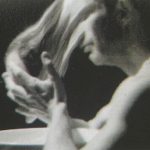
Type: [2D & Wall-Hung]
Face Mask
Artist(s): [Sturgeon]
[SIGGRAPH 1989]
-
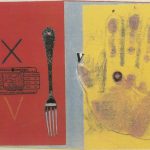
Type: [2D & Wall-Hung]
Five Volts
Artist(s): [Flanagan]
[SIGGRAPH 1989]
-

Type: [2D & Wall-Hung]
Flower Power
Artist(s): [Kamoi]
[SIGGRAPH 1989]
-
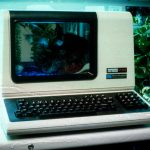
Type: [3D & Sculpture]
Folk Art Fish Tank
Artist(s): [Anderson]
[SIGGRAPH 1989]
-

Type: [2D & Wall-Hung]
Global Pillage
Artist(s): [Herrnstadt]
[SIGGRAPH 1989]
-

Type: [2D & Wall-Hung]
Head Wand
Artist(s): [Sturgeon]
[SIGGRAPH 1989]
-
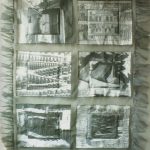
Type: [2D & Wall-Hung]
Home Sweet Home Quilt
Artist(s): [Hoffman]
[SIGGRAPH 1989]
-

Type: [2D & Wall-Hung]
Horse Text Piece
Artist(s): [Smith]
[SIGGRAPH 1989]
-
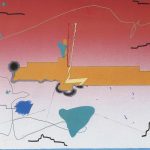
Type: [2D & Wall-Hung]
Innersoul
Artist(s): [Jascha]
[SIGGRAPH 1989]
-
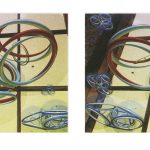
Type: [2D & Wall-Hung]
Invasion
Artist(s): [Snelson]
[SIGGRAPH 1989]
-
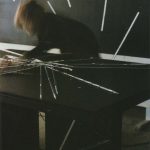
Type: [InstallationInteractive & Monitor-Based]
Klangmikado
Artist(s): [Cooper]
[SIGGRAPH 1989]
-
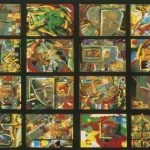
Type: [2D & Wall-Hung]
Leo Castelli
Artist(s): [Riss]
[SIGGRAPH 1989]
-

Type: [2D & Wall-Hung]
Line Brain
Artist(s): [Jascha]
[SIGGRAPH 1989]
-
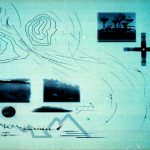
Type: [2D & Wall-Hung]
Manuscript 27
Artist(s): [Banks]
[SIGGRAPH 1989]
-
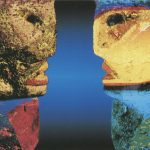
Type: [2D & Wall-Hung]
Medieval Figures
Artist(s): [Bueno]
[SIGGRAPH 1989]
-

Type: [2D & Wall-Hung]
Missing Foundation 3
Artist(s): [Rexroad]
[SIGGRAPH 1989]
-
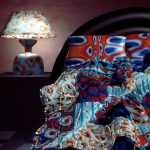
Type: [2D & Wall-Hung]
Mornings
Artist(s): [McDevitt]
[SIGGRAPH 1989]
-

Type: [2D & Wall-Hung]
Mud Shrine
Artist(s): [Hillier]
[SIGGRAPH 1989]
-
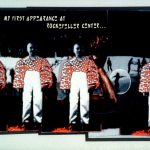
Type: [2D & Wall-Hung]
My First Appearance at Rockefeller Center
Artist(s): [Rexroad]
[SIGGRAPH 1989]
-
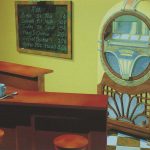
Type: [2D & Wall-Hung]
Night Cafe–Wurlitzer
Artist(s): [Calahan]
[SIGGRAPH 1989]
-
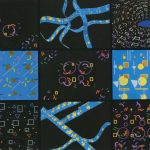
Type: [InstallationInteractive & Monitor-Based]
NLOOPS
Artist(s): [Sorensen]
[SIGGRAPH 1989]
-
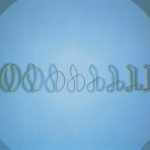
Type: [2D & Wall-Hung]
Number Series
Artist(s): [Moojedi]
[SIGGRAPH 1989]
-
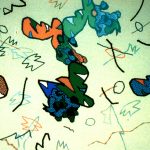
Type: [2D & Wall-Hung]
Once Over Sprightly
Artist(s): [McLean]
[SIGGRAPH 1989]
-
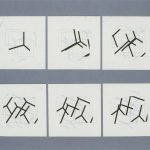
Type: [2D & Wall-Hung]
P-417-E
Artist(s): [Mohr]
[SIGGRAPH 1989]
-
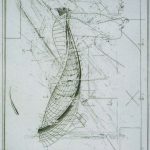
Type: [2D & Wall-Hung]
Phoenix Nov 03
Artist(s): [Herrnstadt]
[SIGGRAPH 1989]
-
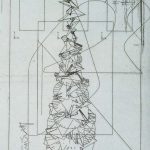
Type: [2D & Wall-Hung]
Phoenix Nov 06
Artist(s): [Herrnstadt]
[SIGGRAPH 1989]
-
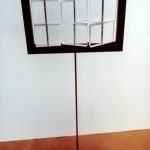
Type: [3D & Sculpture]
Pixel Frame
Artist(s): [Oskoui and Sitton]
[SIGGRAPH 1989]
-

Type: [2D & Wall-Hung]
Red Ridge
Artist(s): [Guzak]
[SIGGRAPH 1989]
-
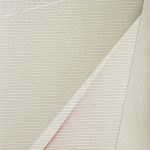
Type: [2D & Wall-Hung]
Redtower.S
Artist(s): [Finley]
[SIGGRAPH 1989]
-

Type: [2D & Wall-Hung]
Ronfish
Artist(s): [MacNeil]
[SIGGRAPH 1989]
-
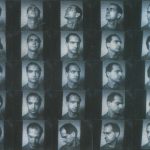
Type: [InstallationInteractive & Monitor-Based]
Scan/Look/Express
Artist(s): [Weil]
[SIGGRAPH 1989]
-
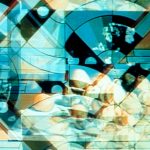
Type: [2D & Wall-Hung]
Series - Does Appropriation Count? 1
Artist(s): [Monroe]
[SIGGRAPH 1989]
-
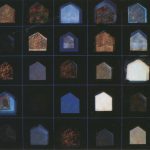
Type: [2D & Wall-Hung]
Shrine Quilt
Artist(s): [Hillier]
[SIGGRAPH 1989]
-

Type: [2D & Wall-Hung]
Signal to Noise, pages 20, 21
Artist(s): [Hickman]
[SIGGRAPH 1989]
-
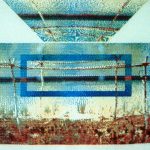
Type: [2D & Wall-Hung]
Silences
Artist(s): [Toscano]
[SIGGRAPH 1989]
-
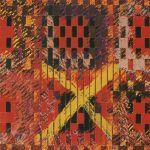
Type: [2D & Wall-Hung]
Six Holes, Five Read
Artist(s): [Colby]
[SIGGRAPH 1989]
-

Type: [2D & Wall-Hung]
Smokers #4
Artist(s): [Stamos]
[SIGGRAPH 1989]
-
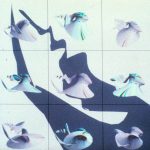
Type: [2D & Wall-Hung]
Spherical Corner
Artist(s): [Hushlak and Jevans]
[SIGGRAPH 1989]
-
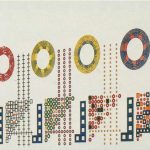
Type: [2D & Wall-Hung]
STL D26
Artist(s): [Wilson]
[SIGGRAPH 1989]
-
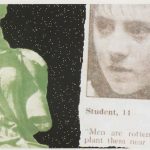
Type: [2D & Wall-Hung]
Student 14
Artist(s): [Kirka]
[SIGGRAPH 1989]
-
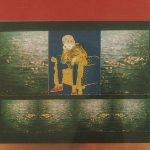
Type: [2D & Wall-Hung]
Syntagram #1
Artist(s): [Lenavitt]
[SIGGRAPH 1989]
-
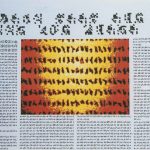
Type: [2D & Wall-Hung]
Text Text Piece
Artist(s): [Smith]
[SIGGRAPH 1989]
-
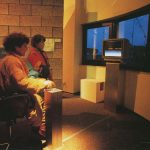
Type: [InstallationInteractive & Monitor-Based]
The Legible City
Artist(s): [Shaw]
[SIGGRAPH 1989]
-
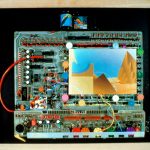
Type: [3D & Sculpture]
The Magic Revealed
Artist(s): [Paston]
[SIGGRAPH 1989]
-
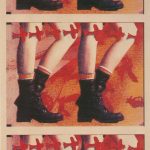
Type: [2D & Wall-Hung]
The Powers That Be
Artist(s): [Morie]
[SIGGRAPH 1989]
-

Type: [2D & Wall-Hung]
The Ruby Slippers
Artist(s): [Rosen]
[SIGGRAPH 1989]
-
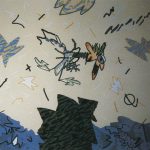
Type: [2D & Wall-Hung]
The Sprite Fantastic #4
Artist(s): [McLean]
[SIGGRAPH 1989]
-
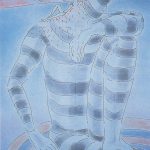
Type: [2D & Wall-Hung]
Thoughts of the Moon
Artist(s): [Nessim]
[SIGGRAPH 1989]
-
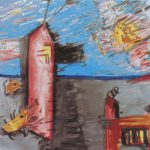
Type: [2D & Wall-Hung]
Tower
Artist(s): [Joffe]
[SIGGRAPH 1989]
-

Type: [2D & Wall-Hung]
Transition 12
Artist(s): [Valesco]
[SIGGRAPH 1989]
-

Type: [2D & Wall-Hung]
Triple Cross
Artist(s): [Schminke]
[SIGGRAPH 1989]
-
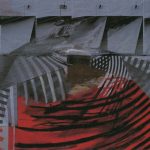
Type: [2D & Wall-Hung]
Two Skies
Artist(s): [Ursyn]
[SIGGRAPH 1989]
-
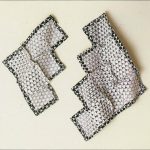
Type: [2D & Wall-Hung]
Two Triangles
Artist(s): [Migliore]
[SIGGRAPH 1989]
-
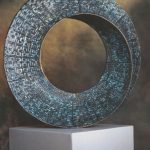
Type: [3D & Sculpture]
Umbilic Torus NC
Artist(s): [Ferguson]
[SIGGRAPH 1989]
-

Type: [Interactive & Monitor-Based]
Untitled
Artist(s): [Mallary]
[SIGGRAPH 1989]
-
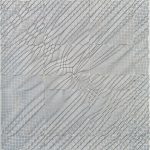
Type: [2D & Wall-Hung]
Untitled (reference #87)
Artist(s): [Hébert]
[SIGGRAPH 1989]
-
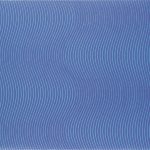
Type: [2D & Wall-Hung]
Vibrant
Artist(s): [Fischer]
[SIGGRAPH 1989]
-
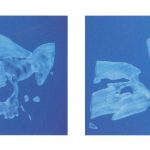
Type: [2D & Wall-Hung]
Views From Below: on the Eye of the Storm
Artist(s): [Johnson]
[SIGGRAPH 1989]
-

Type: [2D & Wall-Hung]
Voltaic/Transistor/Chip
Artist(s): [Yazzolino]
[SIGGRAPH 1989]
-
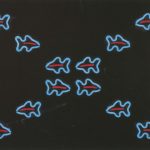
Type: [Animation & Video]
wall-o-fish
Artist(s): [Hauser]
[SIGGRAPH 1989]
-
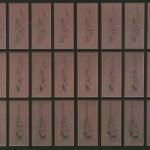
Type: [2D & Wall-Hung]
Woman's Work
Artist(s): [Muskovitz]
[SIGGRAPH 1989]
1
Traveling Art Show Chair(s):
- Patric D. Prince
-
- California State University
- Independent Curator



